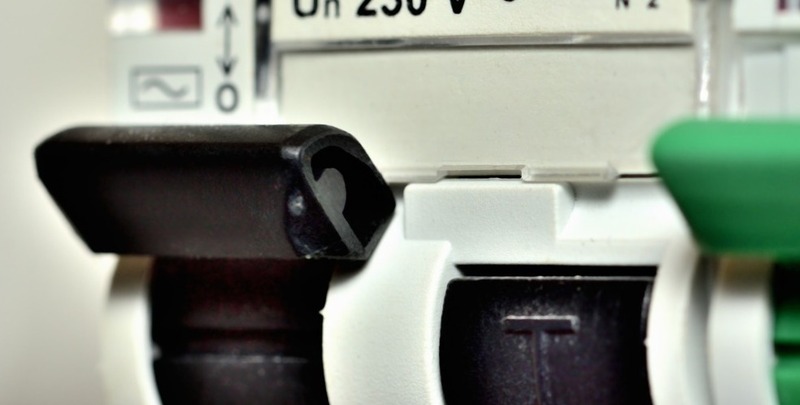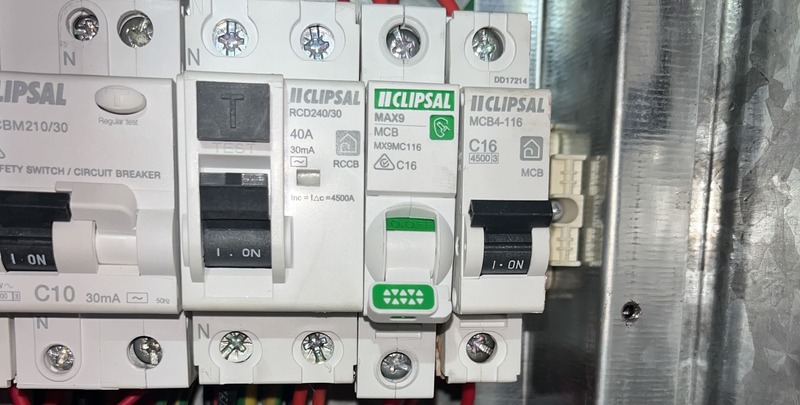
What is an RCD Safety Switch? How Does It Work?
Ensuring electrical safety in Australian homes prevents accidents and protects lives. One essential device that contributes significantly to this safety is the Residual Current Device (RCD), commonly known as the safety switch.
RCDs are electrical safety devices designed to protect residents from electric shocks and electrical fires by detecting faults in the electrical system.
Understanding what an RCD safety switch is and how it operates can help homeowners appreciate its importance and ensure their homes are adequately safeguarded.
Understanding the RCD Safety Switch
Residual Current Devices are critical to home electrical safety. Their primary function is to monitor the electrical current flowing through electrical circuits. If it detects an imbalance between the live and neutral wires, it quickly disconnects the electrical circuit, preventing a potential electric shock or fire.
RCDs are often confused with circuit breakers and surge protectors, but they serve different purposes. While a circuit breaker protects against overloading and short circuits and surge protectors guard your appliances from sudden increases in power, an RCD specifically safeguards against electrical leaks that could result in severe harm or fire hazards. This additional layer of protection is vital in maintaining a safe living environment.
In residential settings, RCDs are typically installed in the main switchboard. They provide broad protection across multiple circuits, ensuring comprehensive safety for the entire household. Understanding these differences and the role of RCDs underscores their importance in any modern home electrical system.

How Does an RCD Safety Switch Work?
The RCD safety switch operates by continuously monitoring the electric current flowing through a circuit. It compares the current entering the circuit through the live wire with the current leaving through the neutral wire. Under normal conditions, these currents are equal.
When an imbalance occurs, it indicates that some of the electrical current is leaking, potentially through a person or to the ground. This is where the RCD steps in. The device detects the discrepancy, often as small as 30 milliamps, and swiftly disconnects the power supply, usually within 30 milliseconds.
This rapid response is crucial in preventing electric shocks or fires. By cutting off the electricity almost instantly, the RCD significantly reduces the risk of serious injury or property damage. Its ability to detect even minor imbalances makes it an indispensable safety feature in any home.
The Importance of RCD Safety Switches in Homes
RCD safety switches, also known as Residual Current Devices, are essential components in modern home electrical systems.
Here’s why they’re so important:
- Protection against electric shock: RCD safety switches are designed to prevent electric shocks. They monitor the electrical current flowing through a circuit and instantly cut off the power if they detect an imbalance, which could indicate a fault or a person coming into contact with live parts.
- Fire prevention: Faulty wiring or appliances can cause electrical faults that might lead to fires. RCD safety switches can help prevent these incidents by detecting faults early and cutting off the power before any damage can occur.
- Compliance with regulations: In many regions, having RCD safety switches installed in homes is a legal requirement. Ensuring your home complies with these regulations not only keeps you safe but also avoids potential legal issues when selling or renting out your property.
- Peace of mind: Knowing that your home is equipped with RCD safety switches provides peace of mind. It means that you and your family are protected from electrical hazards, allowing you to use electrical appliances without worrying about potential dangers.
- Protecting appliances: RCD safety switches also protect your appliances by preventing electrical surges and faults from causing damage, helping to prolong the lifespan of your valuable devices.
Overall, RCD safety switches are a crucial investment in home safety, providing multiple layers of protection for both people and property.
Types of RCD Safety Switches
RCD safety switches come in various types, each designed to provide different levels of protection and flexibility to suit specific needs in residential settings.
- Fixed RCDs – Fixed RCDs are installed in the main switchboard and offer permanent protection for the entire home. They continuously monitor multiple circuits and provide broad coverage against electrical faults. By being part of the home’s electrical infrastructure, fixed RCDs ensure that all connected devices and appliances benefit from their protective features, making them a reliable choice for comprehensive household safety.
- Portable RCDs – Portable RCDs provide a flexible solution for temporary protection. These devices are particularly useful when using power tools or outdoor appliances that might not be connected to a circuit protected by a fixed RCD. Easy to use, portable RCDs can be plugged into any standard outlet, providing immediate safety benefits without requiring permanent installation. This flexibility makes them ideal for use in areas like gardens, workshops, or during home maintenance activities.
- Socket-outlet RCDs – Socket-outlet RCDs are integrated directly into specific power points. These provide localised protection for high-risk areas, such as bathrooms, kitchens, or outdoor sockets. By installing RCDs at the outlet level, homeowners can ensure added safety where water and electricity might mix, or where portable appliances are frequently used.
Each type of RCD offers unique advantages, and a combination of these devices can provide layered protection, ensuring that all areas of the home are adequately safeguarded against electrical hazards.

Understand Your Safety Switches
RCD safety switches are indispensable for ensuring electrical safety in Australian homes. By detecting and responding to electrical faults almost instantly, they protect residents from electric shocks and reduce the risk of electrical fires.
Their importance cannot be overstated, making them a crucial component of any household’s safety measures.
Investing in properly installed and regularly maintained RCDs provides peace of mind, knowing that your home is equipped with the best possible protection against electrical hazards. Ensure your home is safe by having RCD safety switches installed and tested by a licensed electrician.
Please note: This information is provided for advice purposes only. Regulations differ from state to state, so please consult your local authorities or an industry professional before proceeding with any work. See our Terms & Conditions here.